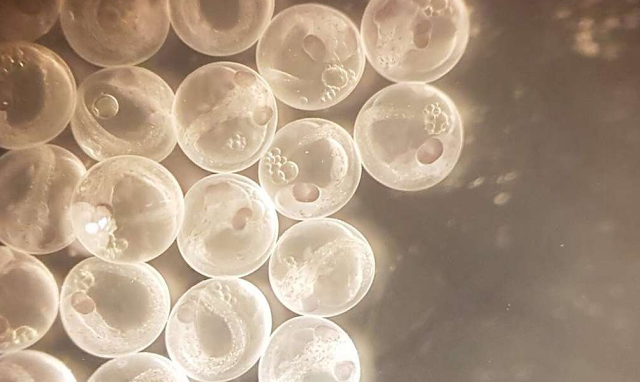The stickleback is a small fish of the most common. But some time ago, researchers made about it, a discovery quite out of the ordinary. A female nicknamed Mary whose eggs were fertilized internally and developed normally to give birth to small fish grow up.
Off the west coast of Scotland, a group of islands known as the Outer Hebrides. This is where researchers from the University of Nottingham (UK) found the one they later nicknamed Mary. A female stickleback that, among other hands, could have been suspected of being capable of Immaculate Conception.Recall that the stickleback - its scientific name Gasterosteus aculeatus - is a widely studied common fish. His mode of reproduction in particular. It is the male who establishes a nest and then seduces a female to come and lay her eggs. Once the female has left, the male fertilizes the eggs and takes care of them until they hatch.
Understand then the surprise of the researchers when they realized that Mary carried in her, fertilized eggs already become embryos! And it was by a cesarean section that they gave birth to some 55 perfectly healthy small fish that not only reached adulthood but which, for about twenty of them, continue to live in Nottingham's aquariums.
Chance or evolution of the reproductive mechanism?
How could this semblance of Immaculate Conception have occurred? Two fairly conventional tracks offered to researchers: that of parthenogenesis or that of the hermaphroditic fish. In the first case, her offspring would have been genetically identical to Mary. In the second case, the small fish would have carried only genes from Mary. But simple genetic tests have shown that they have "foreign" genes. "Of course, a father's," says Laura Dean.""What probably happened is that before she was captured, Mary went to a nest to lay her eggs. But another female had already been there. Part of the sperm spilled on the eggs of this other stickleback had to enter Mary, probably through its spawning tube. This sperm then fertilized the eggs worn by Mary. Eggs that she never laid, " says the researcher at the University of Nottingham.
"In evolution, what Mary has achieved is particularly difficult," says Andrew MacColl, a researcher in evolutionary biology. It remains to be seen whether this is a simple act of chance or whether, on the contrary, we would be there in the presence of the index of a genetic or evolutionary change in the reproductive mechanism of the species.
WHAT YOU MUST REMEMBER
- Stickleback is a small common fish often studied.
- The eggs laid by the female stickleback are usually fertilized at the nest by the male.
- Yet researchers had to give birth to Mary by cesarean section.
- They think that she had been fertilized internally by a sperm intended for eggs deposited in a nest.

No comments:
Post a Comment